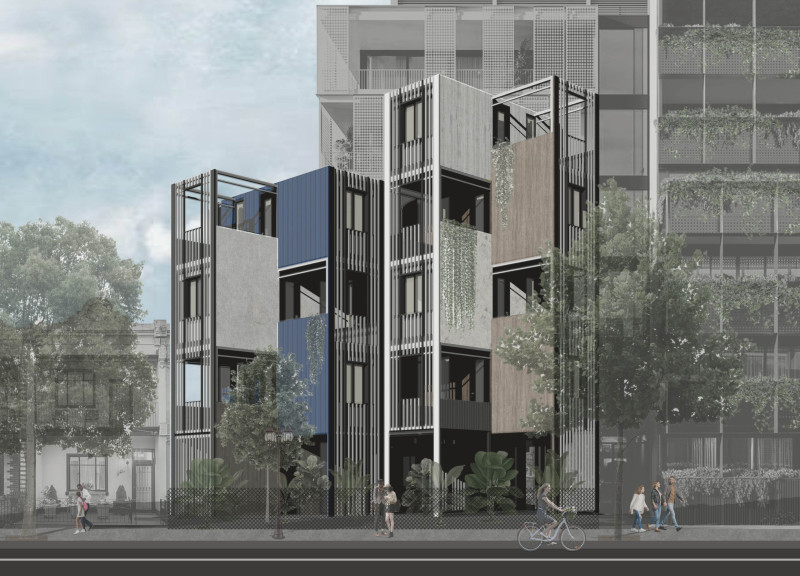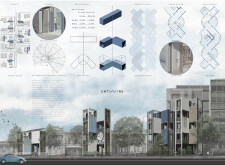5 key facts about this project
The design located in Port Melbourne presents a modern approach to urban living. It uses shipping containers as the main building blocks, offering solutions to common challenges such as density, affordability, and sustainability. The project also encourages a sense of self-expression among those who call it home.
Modularity and Flexibility
At the heart of the design is the use of 40' Dry Cargo and Hi-Cube containers, which allow for quick construction and efficient use of space. These containers have flexible dimensions: heights range from 2.69m to 2.90m, widths from 2.35m to 2.44m, and lengths from 12.01m to 12.19m. This variability supports various living arrangements, making it possible for residents to personalize their spaces while sharing a common environment.
Braided Structure and Urban Integration
The layout features a braided structure designed to enhance connections within the urban setting. This configuration helps create pathways that link the buildings to public areas. Natural light is welcomed into the design, promoting outdoor living and improving residents' overall well-being. The containers form a sturdy framework while also offering privacy and shelter, allowing for a mix of individual and communal spaces.
Contextual Response and Materiality
The design thoughtfully responds to its surroundings by blending aspects of Victorian architecture with modern styles. This combination illustrates how architectural ideas can evolve over time. The exterior cladding of the containers enables flexibility in appearance, helping the project fit harmoniously into the neighborhood while allowing for personal expression.
Sustainability and Resourcing
Sustainability is a key focus, with the project relying on locally sourced shipping containers, highlighting a culture of recycling. This choice meets current housing needs and contributes to environmental goals. Efficient sun orientation is another important consideration, helping to further reduce energy use.
The arrangement of containers encourages community interaction. Common areas invite social gatherings and foster connections among residents while still maintaining personal privacy within individual units.


















































